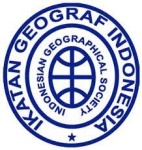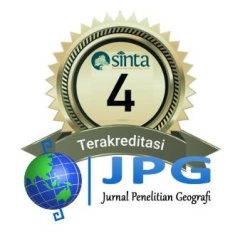Geospatial Perspective in the Distribution and Zoning Model of Senior High Schools in Bandar Lampung City
Abstract
References
Abulibdeh, A., Al-Ali, M., Al-Quraishi, D., Al-Suwaidi, W., Al-Yafei, B., & Al-Mazawdah, S. (2024). Assessing the spatial distribution and accessibility of public and private schools in Qatar: A GIS-based analysis. Geomatica, 76(2), 100015. https://doi.org/10.1016/j.geomat.2024.100015
Anlimachie, M. A., & Avoada, C. (2020). Socio-economic impact of closing the rural-urban gap in pre-tertiary education in Ghana: Context and strategies. International Journal of Educational Development, 77, 102236. https://doi.org/10.1016/j.ijedudev.2020.102236
Ardi, A., Danil, M., Murni, D., Gistituati, N., Rusdinal, R., & Hervi, F. (2023). The Implementation of Student Admission Based on Zoning in Indonesia: Problems, Challenges, and Solutions. Jurnal Kependidikan: Jurnal Hasil Penelitian Dan Kajian Kepustakaan Di Bidang Pendidikan, Pengajaran Dan Pembelajaran, 9(3), 914-923. https://doi.org/10.33394/jk.v9i3.8632
Aulia, R. D. P., Rosdiana, W., Putri, I. Z. F., Alis, F. P., Herlina, N. A., & Lestari, M. D. (2025, February). Implementation Of PPDB Zoning Policy At Junior High School Level In Surabaya City, Tambaksari District, Surabaya (Case Study Of Smpn 9 Surabaya). In International Joint Conference on Arts and Humanities 2024 (IJCAH 2024) (pp. 1882-1904). Atlantis Press. https://doi.org/10.2991/978-2-38476-317-7_174
Chabundit, M. (2024). Equity in Education: Addressing Socioeconomic Disparities in Thai Public Schools. Journal of Buddhist Education and Research (JBER), 10(3), 162-172. retrieved from https://so06.tci-thaijo.org/index.php/jber/article/view/282441
Chaniago, S., Cahya Dewi , D., Hasanah, S., Yusanti, Y., Mansur, H., & Faqri, R. (2024). Dynamics and Challenges of the Zoning-Based Student Admission: A Study on Student Opportunities Across Regions. Indonesian Journal of Instructional Media and Model, 6(2), 125–136. https://doi.org/10.32585/ijimm.v6i2.6151
Cherono, A. (2023). Modelling Spatial Accessibility for Precision Targeting of School-based Interventions: a Case Study of Kilifi County (Doctoral dissertation, University of Nairobi).
Deniz, M. (2024). Analysis of accessibility to public schools with GIS: a case study of Salihli city (Turkey). Children's Geographies, 22(1), 30-51. https://doi.org/10.1080/14733285.2023.2209532
Do, D. N. M., Hoang, L. K., Le, C. M., & Tran, T. (2020). A human rights-based approach in implementing sustainable development goal 4 (Quality Education) for ethnic minorities in Vietnam. Sustainability, 12(10), 4179. https://doi.org/10.3390/su12104179
Fuady, Z., Aulia, F., & Jumala, M. (2024, June). Spatial analysis of mosque distribution for inclusive community services in Banda Aceh City. In IOP Conference Series: Earth and Environmental Science (Vol. 1356, No. 1, p. 012075). IOP Publishing. DOI 10.1088/1755-1315/1356/1/012075
Ganasegeran, K., Abdul Manaf, M. R., Safian, N., Waller, L. A., Abdul Maulud, K. N., & Mustapha, F. I. (2024). GIS-based assessments of neighborhood food environments and chronic conditions: an overview of methodologies. Annual Review of Public Health, 45(1), 109-132.
Garcia, I. (2025). The Poorer the Neighborhood, the Harder It Is to Reach the Park: A GIS Equity Analysis from Salt Lake City. Sustainability, 17(9), 3774. https://doi.org/10.3390/su17093774
Germain, E. (2022). Well-being and equity: A multi-disciplinary framework for rethinking education policy. Peabody Journal of Education, 97(1), 6-17. https://doi.org/10.1080/0161956X.2022.2026716
Huang, Q., Cui, X., & Ma, L. (2023). The equity of basic educational facilities from the perspective of space. Sustainability, 15(15), 12031. https://doi.org/10.3390/su151512031
Jiang, J., Wang, Z., Yong, Z., He, J., Yang, Y., & Zhang, Y. (2024). Spatial distribution and accessibility analysis of primary school facilities in mega cities: A case study of Chengdu. Sustainability, 16(2), 723. https://doi.org/10.3390/su16020723
Lee, J., & Lubienski, C. A. (2021). A spatial analysis on charter school access in the New York metropolitan area. Teachers College Record, 123(2), 1-30. https://doi.org/10.1177/016146812112300205
Lynch, Kevin. (1960). The image of the city . Cambridge, Mass: MIT Press.
Meena, D. K., Tripathi, R., & Agrawal, S. (2023). An evaluation of primary schools and its accessibility using GIS techniques: a case study of Prayagraj district, India. GeoJournal, 88(2), 1921-1951. https://doi.org/10.1007/s10708-022-10715-3
Muta'ali, Lutfi. (2015). Teknik Analisis Regional Untuk. Perencanaan Wilayah Tata Ruang dan Lingkungan. Yogyakarta: Badan Penerbit Fakultas Geografi Penerbit Fakultas Geografi
Owens, A., & Rich, P. (2023). Little boxes all the same? Racial-ethnic segregation and educational inequality across the urban-suburban divide. RSF: The Russell Sage Foundation Journal of the Social Sciences, 9(2), 26-54. https://doi.org/10.7758/RSF.2023.9.2.02
Rad, D., Redeş, A., Roman, A., Ignat, S., Lile, R., Demeter, E., ... & Rad, G. (2022). Pathways to inclusive and equitable quality early childhood education for achieving SDG4 goal—a scoping review. Frontiers in psychology, 13, 955833. https://doi.org/10.3389/fpsyg.2022.955833
Rekha, R. S., Radhakrishnan, N., & Mathew, S. (2020). Spatial accessibility analysis of schools using geospatial techniques. Spatial Information Research, 28(6), 699-708. https://doi.org/10.1007/s41324-020-00326-w
Riyan Ardiansyah, F. A. (2025). Implementation Of The Zoning System As A Selection Method For High School Entrance In Relation To School Distribution. Educatione, 3(1), 26–32. https://doi.org/10.59397/edu.v3i1.46
Riyanti, E. D., Ayatina, H., Astuti, F. T., & Rahmah, P. J. (2020, August). Zoning system of Education in Indonesia challenges and their future. In 1st Progress in Social Science, Humanities and Education Research Symposium (PSSHERS 2019) (pp. 1111-1114). Atlantis Press. https://doi.org/10.2991/assehr.k.200824.241
Shahraki, A. A., Ebrahimzadeh, I., & Kashefidoost, D. (2016). Distributional planning of educational places in developing cities with case studies. Habitat international, 51, 168-177. https://doi.org/10.1016/j.habitatint.2015.10.015
Sharma, G., & Patil, G. R. (2022). Spatial and social inequities for educational services accessibility-A case study for schools in Greater Mumbai. Cities, 122, 103543. https://doi.org/10.1016/j.cities.2021.103543
Sulistyosari, Y., Wardana, A., & Dwiningrum, S. I. A. (2023). School zoning and equal education access in Indonesia. Int J Eval & Res Educ ISSN, 2252(8822), 8822. DOI: 10.11591/ijere.v12i2.22488
Sulistyosari, Y., Wardana, A., & Dwiningrum, S. I. A. (2023). School zoning and equal education access in Indonesia. Int J Eval & Res Educ ISSN, 2252(8822), 8822. DOI: 10.11591/ijere.v12i2.22488
Tanveer, H., Balz, T., Sumari, N. S., Shan, R. U., & Tanweer, H. (2020). Pattern analysis of substandard and inadequate distribution of educational resources in urban–rural areas of Abbottabad, Pakistan. GeoJournal, 85(5), 1397-1409. https://doi.org/10.1007/s10708-019-10029-x
Tonegawa, Y. (2022). Education in SDGs: what is inclusive and equitable quality education?. In Sustainable development disciplines for humanity: Breaking down the 5ps—people, planet, prosperity, peace, and partnerships (pp. 55-70). Singapore: Springer Nature Singapore. https://doi.org/10.1007/978-981-19-4859-6_4
Unterhalter, E. (2019). The many meanings of quality education: Politics of targets and indicators in SDG 4. Global Policy, 10, 39-51. https://doi.org/10.1111/1758-5899.12591
Wang, Y., Liu, Y., Xing, L., & Zhang, Z. (2021). An improved accessibility-based model to evaluate educational equity: A case study in the city of Wuhan. ISPRS International Journal of Geo-Information, 10(7), 458. https://doi.org/10.3390/ijgi10070458
Wangenge-Ouma, G., Manyasa, E., & Ben, P. E. (2024). Achieving SDG 4: A challenge of education justice. In Higher Education and SDG4: Quality Education (pp. 55-73). Emerald Publishing Limited. https://doi.org/10.1108/978-1-83797-627-020241004
Zangana, D. D., Ibrahim, A. J., Yuan, H., & Amani-Beni, M. (2024). Educational inequality in urban settings: A spatial analysis of school distribution and double-shift system challenges–A case study. Journal of Urban Management, 13(4), 832-849. https://doi.org/10.1016/j.jum.2024.08.004
Refbacks
- There are currently no refbacks.
INDEX JOURNAL

















